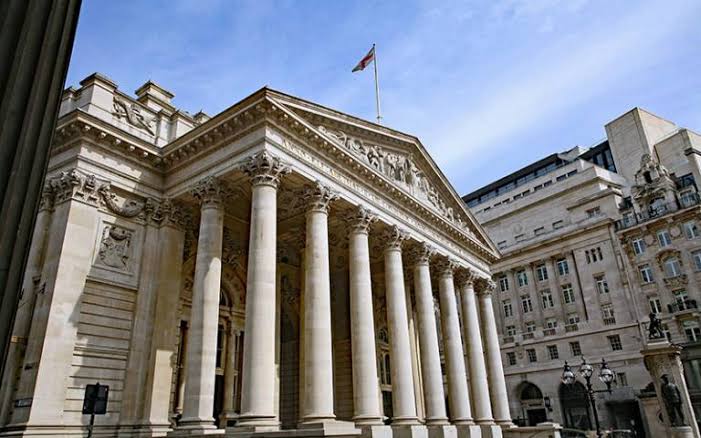
During the time that its counterpart in the United Kingdom is getting ready to deliver its own verdict, the Federal Reserve of the United States of America is praising the additional achievement that has been achieved in the fight against inflation, but it is not sufficient.During the time that its counterpart in the United Kingdom is getting ready to deliver its own verdict, the Federal Reserve of the United States of America is praising the additional achievement that has been achieved in the fight against inflation, but it is not sufficient.
In the event that the financial markets and a large number of economists are correct, the Bank of England will undertake its first interest rate decrease since the year 2020 at noon on Thursday. This comes only hours after the United States central bank signaled that it could take action the following month.
Despite the fact that it revised its assessment of inflation to simply “somewhat elevated” and hailed “further progress” in the right direction, the Federal Reserve maintained its benchmark rate in the range of 5.25% to 5.50% on Wednesday evening.
The message was just what had been anticipated, and it was interpreted as offering the possibility of a reduction at the subsequent meeting, which will take place on September 18th.
Jay Powell, the head of the Federal Reserve, stated to the media that it was feasible provided that the data continued to move in the desired direction.
When the Federal Reserve made its pronouncement, it made it possible for the Bank of England to seize the spotlight the next day.
From the perspective of the majority of economists polled by the Reuters news agency in advance, this decision about the interest rate was seen as more tightly balanced but nevertheless plausible.
There was a 65% forecast of a fall from 5.25% to 5% according to the market estimates provided by LSEG.
Many analysts, however, emphasized that the absence of any advice from the bank meant that a reduction in interest rates was not at all certain.
This has been attributed, at least in part, to the recent election that took place in the United Kingdom, with the members of the Bank’s monetary policy committee being eager to maintain the institution’s autonomy.
Millions of borrowers, including those with mortgages, who have been feeling the effects of the Bank’s fight against inflation since December 2021, would welcome the Bank’s decision to lower interest rates.
When the COVID pandemic began to subside, the United Kingdom was the first major western economy to respond to the acceleration in the rate of price growth. This occurred after the pandemic had passed.
However, the highest point of inflation occurred after Russia invaded Ukraine, when the prices of energy and a great number of essential commodities reached levels that had never been seen before.

The compression on living standards that came to be known as the cost of living crisis was brought about as a result of this, and it has continued to take shape ever since it was first brought about.
Although the Bank of England has enacted fourteen straight rises in interest rates in an effort to stifle demand in the United Kingdom’s economy, it has maintained the rate since the latest increase was made in August of the previous year.
Since that time, certain aspects of inflation, such as those pertaining to services, have proven to be persistent, and the Bank of England has also repeatedly cautioned that the rate of wage rise is too rapid to permit a reduction in interest rates.
Not only will it announce its most recent interest rate decision at noon on Thursday, but it will also announce its quarterly monetary policy report, which will include the most recent estimates made by the Bank staff regarding inflation, economic growth, and employment.
The decision of the Federal Reserve to raise interest rates and the accompanying statement did not initially have much of an impact on the financial markets since the fundamental message had already been priced in, according to analysts.
The growth of shares on Wall Street
On the other hand, US equities eventually found forward momentum, with the Nasdaq, which is focused on technology, surging by 3%. The S&P 500 index as a whole was roughly two percent higher.
Due to the fact that the possibility of lower interest rates tends to weaken a home currency, the dollar lost some marginal territory, which is to be expected given the fact that this can be predicted.
In the event that the nine-member committee that is responsible for determining interest rates decides to support a reduction through a majority vote, the Bank of England will most likely indicate that it will take a very cautious approach to future interest rate reductions.
The anticipation of a reduction in interest rates, which has been present throughout the entire year, has pushed lenders to modify their own rates in accordance with the most recent speculation.
The added pain that borrowers are experiencing as a result of the bank’s inflation medicine is a significant component of the ongoing problem with the cost of living that is now occurring.
Mortgage holders, for instance, have been forced to pay hundreds of pounds more each month when they are required to begin new fixed-rate terms. Meanwhile, landlords have been passing on their own increases in borrowing rates to renters.
One of the factors that has contributed to rents reaching record highs is the scarcity of available stock.
Matt Smith, the mortgage expert at Rightmove, made the following statement in response to the forecast: “If the bank rate is cut, it will be really positive news, and hopefully more will follow as the economy continues to stabilise.”
“If there isn’t, people shouldn’t be too concerned since it is quite probable that it will follow in September. I would expect mortgage rates to remain stable and possibly even trickle down a touch, although it won’t happen as quickly as it would if there were a decrease.